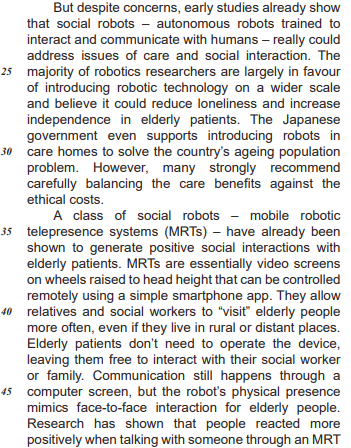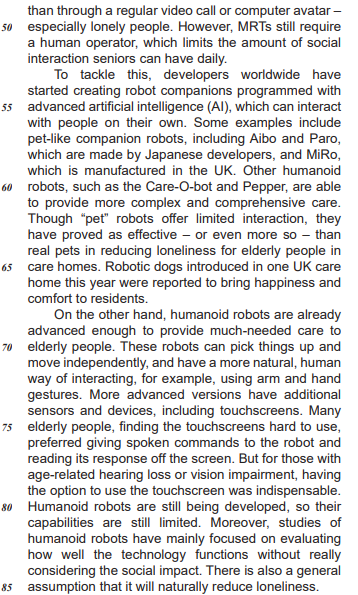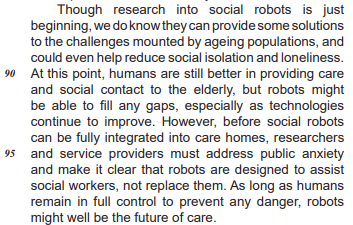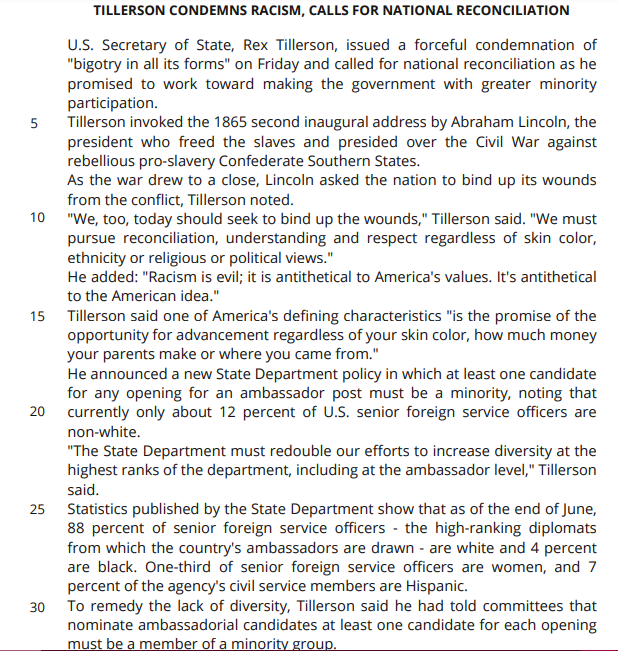Text 1
Technology plays a key role in teenage romance from initial encounters to eventual break-ups, says a US
study.
Teenagers rarely meet online but do use technology for flirting, asking out, meeting up and parting, American think
tank, the Pew Research Center, found. A survey of 1,060 US teenagers aged 13 to 17 revealed that technology brings
them closer but also breeds jealousy. "Digital platforms are powerful tools for teens," said Amanda Lenhart, lead author
of the report from Pew. "But even as teens enjoy greater closeness with partners and a chance to display their
relationships for others to see, mobile and social media can also be tools for jealousy, meddling and even troubling
behaviour."
Digital romance, broken down
Of the 1,060 teenagers surveyed: • 35% said they were currently dating and 59% of that group said technology made
them feel closer to their partner • For boys who were dating, 65% said social media made them more connected to a
significant other while it was 52% for girls • 27% of dating teenagers thought social media made them feel jealous or
insecure in relationships • 50% of all teens surveyed, dating or not, said they had indicated interest by friending
someone on Facebook or other social media and 47% expressed attraction by likes and comments • Texting is king -
92% of teens who were dating said they texted a partner, assuming the partner would check in with "great regularity" •
Jealousy happens, but not as much as flirting does - 11% of teenage daters reported accessing a partner's online
accounts and 16% reported having a partner asking them to de-friend someone What gets discussed during all those
frequent social media enabled check-ins? According to the survey, it is mostly "funny stuff" followed by "things you're
thinking about" as well as other information such as where they are and what their friends have been doing. And forget
having to meet up to resolve a conflict - 48% of dating teenagers said that could be done by texting or talking online.
Online tools, with their accessibility and ease of use, also showed some signs of giving this group relationship anxiety.
Females are more likely to be subject to unwanted flirting and 25% of teenagers surveyed said they have blocked or
unfriended someone because of uncomfortable flirting. And 15% of teenage daters said a partner had used the internet
to pressure them into unwanted sexual activity.
'More than emojis'
Nearly half the respondents admitted to concentrating on their phone ahead of their partner when together with 43% of
dating teens saying that had happened to them. "I don't think this survey reveals much that is surprising. But it is
affirming. Humans are social animals and we build tools to connect with each other,"wrote Julie Beck, an associate
editor at The Atlantic news site, of the survey's findings. "It's not all heart emojis all the time, no, but the tools that
facilitate relationships facilitate all aspects of them, good and bad. "Connecting with others is scary, hard, sometimes
dangerous, but usually, hopefully, good. The teens get it."
(Fonte: http://www.bbc.com/news/technology-34416989.)














